Expressing obligation in English is a communicative need. For that, we use imperatives and modal verbs: MUST/ MUSTN'T and pseduo-modal structures: HAVE TO, NEED TO. However, we have to pay special attention to the differences in meaning existing among them.
MODAL VERB – HAVE TO
Here are the ways in which we use ‘have to’ as a modal.
Take a look at the pictures below, you’ll find the function of ‘have to’ as a modal and examples in everyday use.
MODAL VERB – MUST
You mustn’t procrastinate, you must learn the uses of ‘must’ today without delay.
Here are the ways in which we use ‘must’ as a modal.
Take a look at the pictures below, you’ll find the function of ‘must’ as a modal and examples in everyday use.

MODAL VERB – NEED TO
Here is another modal you need to learn today. Check out the ways in which we use ‘need to’ as a modal.
– necessity (a requirement)
Take a look at the pictures below, you’ll find the function of ‘need to’ as a modal and examples in everyday use.
Don't forget to double check the differences between: MUST, HAVE TO, NEED TO AND SHOULD:
MODAL VERB QUIZ – HAVE TO, MUST, NEED TO
Now you must test yourself with this quiz. You need to know about modals to become a pro.
Answers: 1. have to/must/need to 2. needn’t/don’t have to 3. must 4. have to/must/need to 5. have to/must/need to 6. mustn’t 7. need to 8. didn’t have to
ACTIVITIES:
- LIVEWORKSHEET. CLICK HERE
- Attention, there are several options correct in some activities. Activity number 2 is a multiple choice one.
- BASIC. Have to, must, should. Click here
- HAVE TO, DON'T HAVE TO, MUST, MUSTN'T. Click here
- HAVE TO, DON'T HAVE TO. Click here
- BBC ENglish in a minute. Quizz. Click here
- British Council. Video, worksheets. Click here

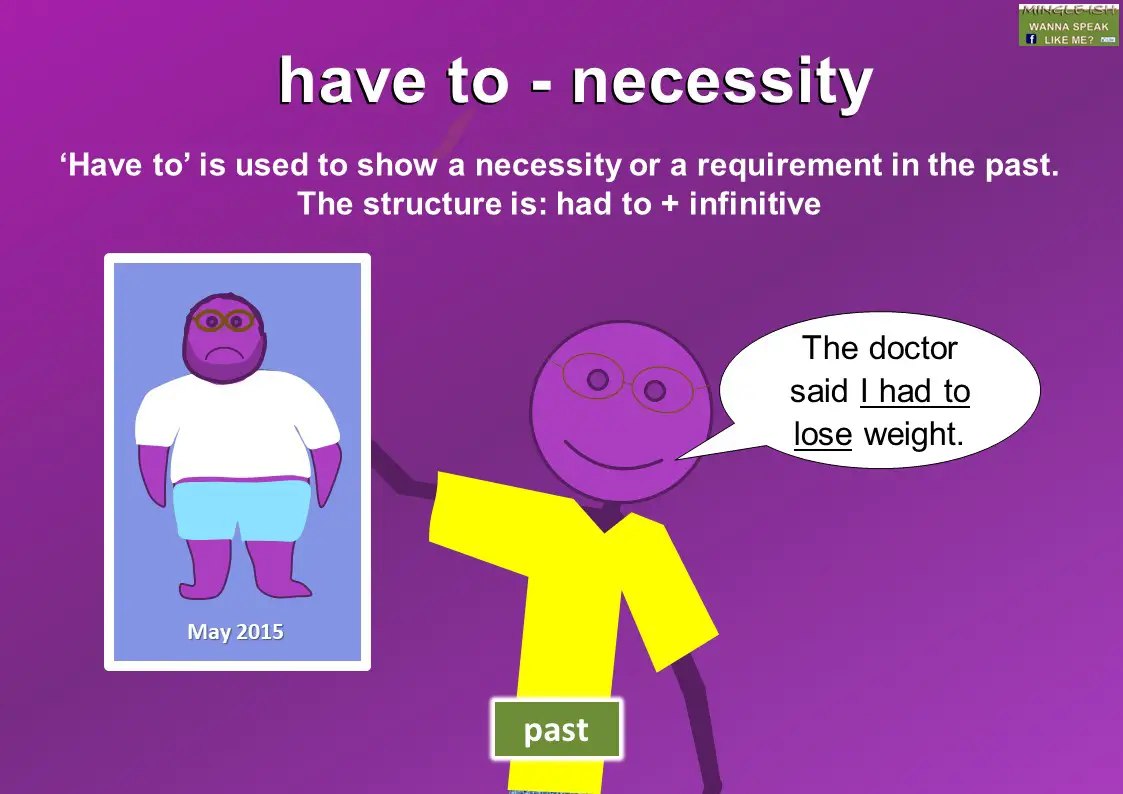



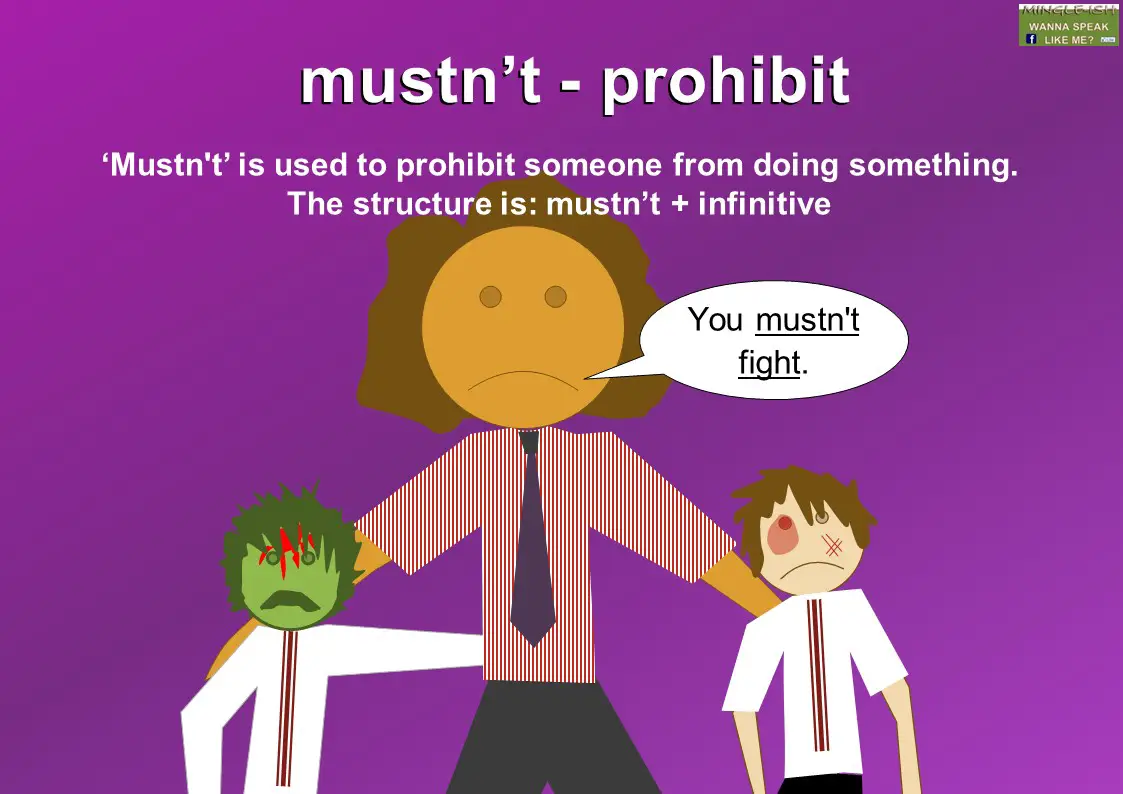
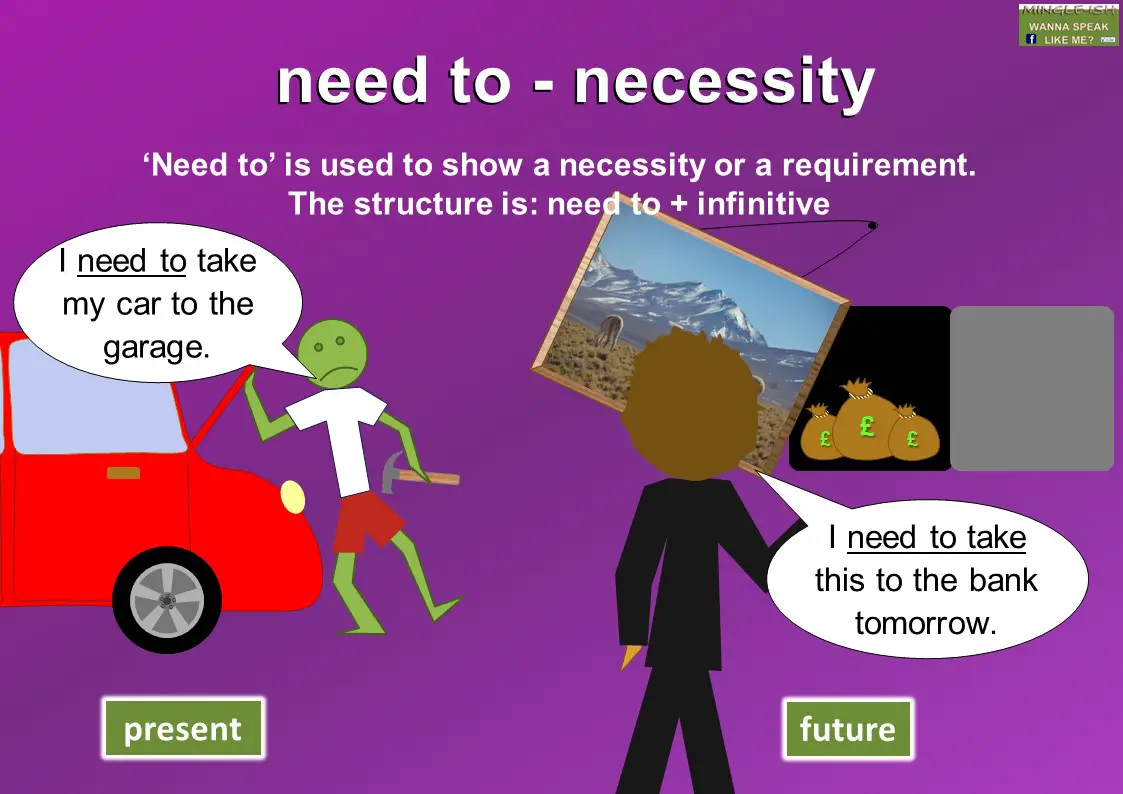
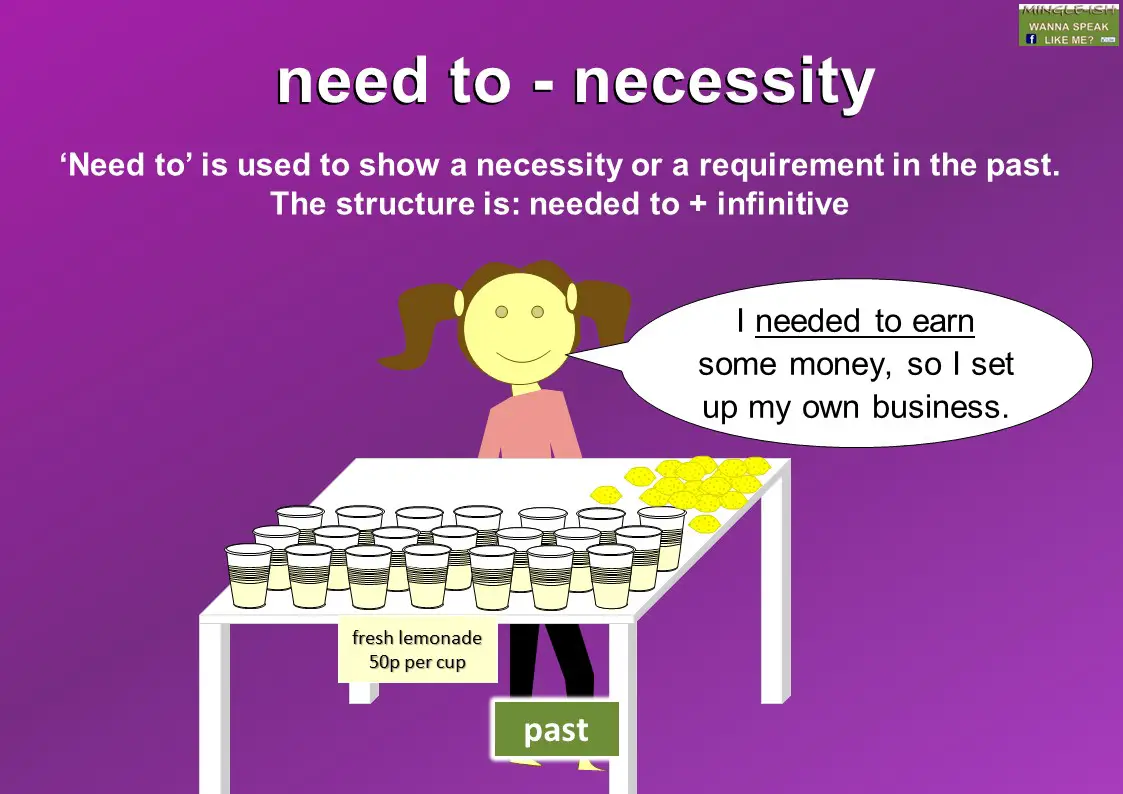
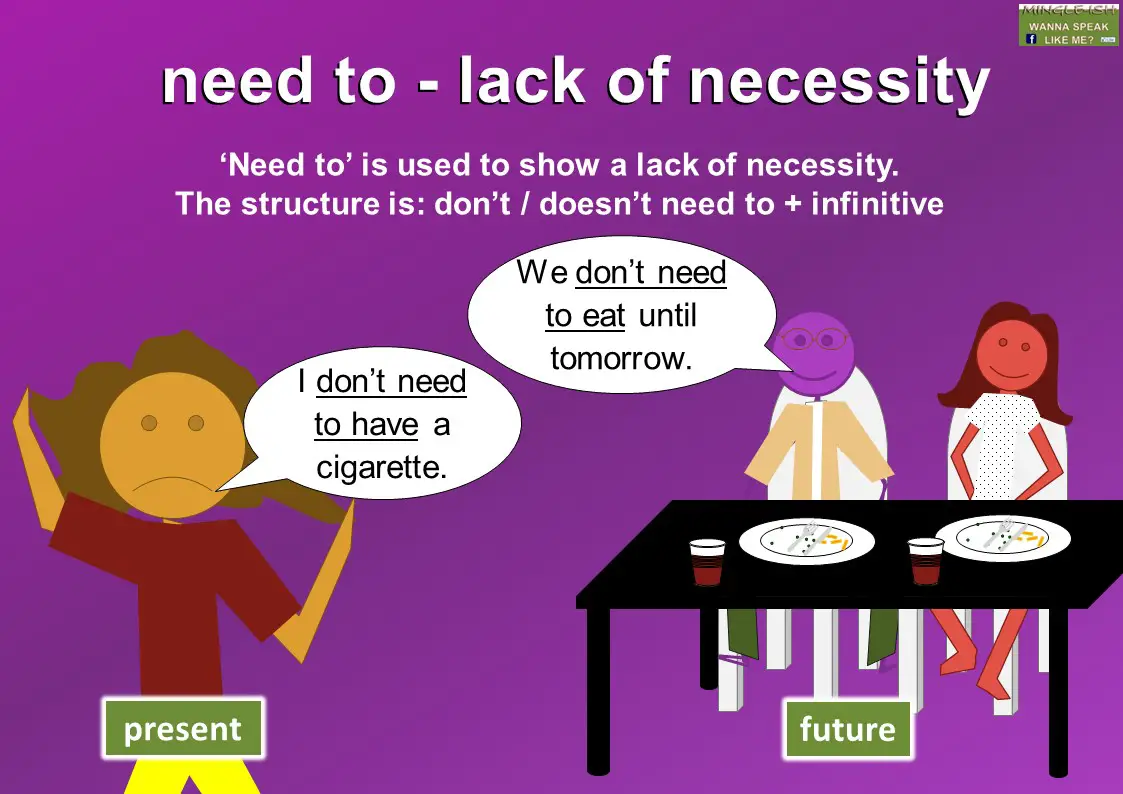
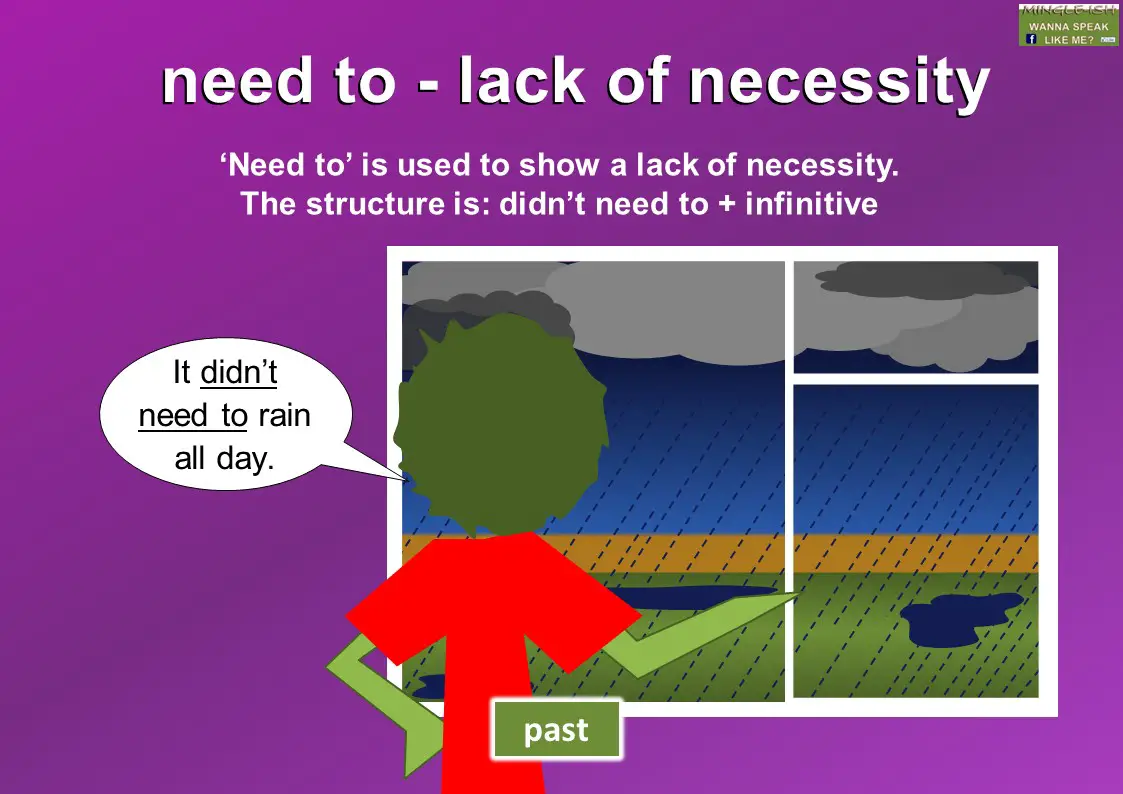



No comments:
Post a Comment